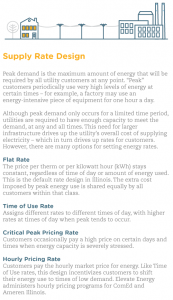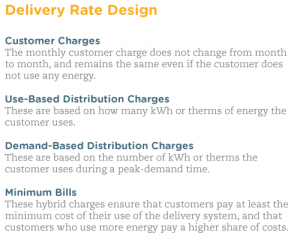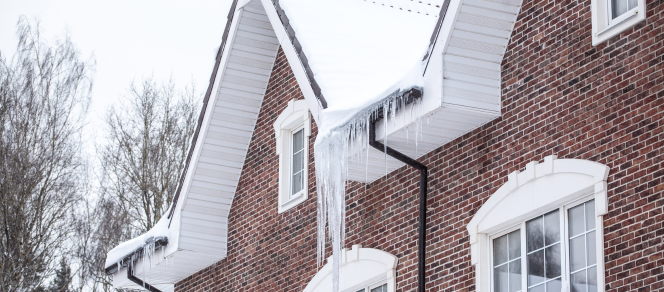Everything You Ever Wanted to Know About Your Electricity Rate
Rate design is the method by which an energy utility calculates charges for the energy you use and for the infrastructure used to deliver that energy to your home. This post explains how these charges are calculated.
How Are Energy Rates Calculated?
Investor-owned electric and natural gas utilities are regulated by state agencies such as the Illinois Commerce Commission. Investor-owned utilities deliver energy to your home via the electric grid or natural gas pipes. They may also supply the electricity or natural gas, or that energy may be supplied, for some customers, by a co-op or a third-party supplier. This post focuses on investor-owned utilities.
 State energy regulators determine how much revenue a utility can collect from customers based on how much it costs the utility to supply and deliver energy. Once regulators approve how much total revenue the utilities can collect, utilities decide how to allocate the costs across specific customer classes, typically categorized as residential, small commercial, large commercial, and industrial.
State energy regulators determine how much revenue a utility can collect from customers based on how much it costs the utility to supply and deliver energy. Once regulators approve how much total revenue the utilities can collect, utilities decide how to allocate the costs across specific customer classes, typically categorized as residential, small commercial, large commercial, and industrial.
For each customer class, the rate design may split customers’ utility bills into various charges, including a supply (or fuel or gas) charge and delivery (or distribution) charges. The resulting rates are intended to reflect the varying costs for supplying energy to each customer class. There are many options for setting energy pricing structures. The fuel charge is based on how much energy a customer uses, and it varies from month to month (see first graphic).
The cost of distributing electricity or natural gas and providing customer service is contained in the delivery charges, which may include a fixed monthly customer charge, fixed monthly metering charges, and delivery charges that vary by how much energy is used or how much energy is used at peak times (see second graphic).
Changing the rate design does not affect the utility’s overall revenue. That amount is established by the regulator at the beginning of the rate setting process. However, the rate design has a significant impact on which customers pay the most.
Rate Designs that Encourage Energy Efficiency and Distributed Renewable Energy
Rate design matters. It can encourage or discourage investments in energy efficiency, benefit or harm the environment, and affect the affordability of energy costs for low income or low-use customers.
For example, the dynamic pricing programs administered by Elevate Energy for Ameren Illinois and ComEd customers are supply rate designs that encourage conserving energy and shifting energy use to off-peak times. On the other hand, high fixed monthly customer charges make it less economical for customers to invest in energy efficiency and distributed renewable energy like rooftop solar systems.
Additional Resources
- Jim Lazar, Regulatory Assistance Project: Fundamentals of Electric Rate Design
- Elevate Energy: Smart Meters and Dynamic Pricing Need Each Other
- Ameren Illinois Power Smart Pricing
- ComEd’s Hourly Pricing program
- Rocky Mountain Institute: A Review of Alternative Rate Designs
- Regulatory Assistance Project: Minimum Bills an Effective Alternative to High Customer Charges



